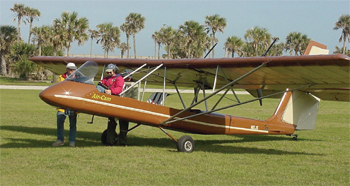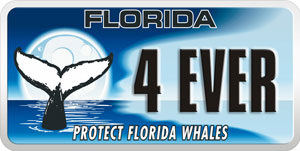
Two right whales breach ocean surface. (NOAA)
As many readers know, Northern Right Whales visit the coastal waters of northeast Florida each winter and are often close enough to be seen from shore. Most of the visiting whales are females who have traveled to our waters to give birth to their calves. They are accompanied by other females, and some juvenile right whales.
Several mother-calf pairs have already been spotted this year, so beachgoers are reminded to keep their eyes out and to report right whale sightings to the Marine Resources Council at 1-888-979-4253.
People are asked to report right whale sightings for two reasons. First, it helps researchers to gather more information about the whales, including the number of calves born each year.
Second, information about right whale locations is broadcast to shipping traffic off our coast, so ships will be aware of the location of right whales in the area. One of the leading causes of mortality for right whales is boat and ship strikes.
Florida Sea Grant researchers have begun a study that uses GIS technology to better understand boater travel patterns off the coasts of St. Johns, Duval and Nassau counties. Mapping those patterns can help whale managers to better understand boater-whale interactions in area waterways. See story

National Geographic configures an airplane with a special camera. (Maia McGuire photo)
People, including surfers, kayakers and recreational boaters must stay more than 500 yards away from right whales. Locally, one airplane, called an “air-cam,” specially designed by National Geographic for filming wildlife, operates under a research permit which allows it to approach right whales for the purpose of photographing them in order to identify the individual whales. Other aircraft are not allowed to approach the whales.
The ‘Right Whale’ to Hunt
Adult right whales are about 50 feet long, while their calves are about 15 feet long at birth. Northern Right Whales are baleen feeders—they use large plates of baleen in their mouths to filter out small shrimp-like animals called copepods from the plankton. These whales spend the spring, summer and fall months in the northern Atlantic, feeding in waters off Cape Cod, Nova Scotia and the Bay of Fundy.
They were given the name “right whale” because they were considered to be the right whale to hunt—they float when killed, have a high yield of blubber, and are slow-moving whales that are found relatively close to shore.
| Related Content North Atlantic Right Whales — NOAA Marine Resources Council Protect Florida Whales License Plate |
Northern Right Whales were hunted almost to extinction in the early part of the 20th century. By 1935, it was estimated that there were only about 100 of these whales left alive. Currently, the population of Northern Right Whales is estimated at about 400 animals. There are two other distinct populations of right whales. In the South Atlantic Ocean, there is a stable population of Southern Right Whales. There are only about 200 North Pacific Right Whales; that population is thought to be on the verge of extinction.
Northern Right Whales have a few distinguishing characteristics. When they come to the surface to breathe, their split blow-hole results in a V-shaped “blow,” the visible pattern of water droplets caused by the exhaled air.
The whales are completely black on their upper body except for white spots on their heads. These white spots are called callosities, and the callosities are used to identify individual whales—rather like fingerprints are used to identify humans. The callosities are rough patches of skin, which become colonized by small, white crustaceans that are relatives of crab and shrimp called cyamids. It is these cyamids that give the callosities the white coloration.
Right whales have no back, or dorsal fin. Typically, right whales will not raise much of their head or body above the water, so they are often difficult to see from shore.
You May See In the Vicinity…
In addition to Northern Right Whales, there are other whale and dolphin species that can be seen off our coast. The most common of these is the bottlenose dolphin. Often incorrectly referred to as a “porpoise,” the bottlenose dolphins are often seen around the right whales. Scientists are not sure why this is, but they suspect that the dolphins are simply curious about these large creatures. They may also be able to find food where the whales stir up the shallow water with their tails.

Sales of the Protect Florida Whales license plate support whale research and rescue efforts. (Harbor Branch Oceanographic)
The other large whale sometimes seen close to our coast is the humpback whale. Like right whales, this whale is also a baleen feeder, but differs from the right whale in several ways. It tends to be much more active than the right whales—often raising its flippers or tail out of the water, and even leaping out of the water. The humpback whale does have a dorsal fin, about 2/3 of the way along its back. It has a mottled black and white pattern on the underside of its body, including under the flippers and tail. The pattern on the underside of the tail is used to identify individual humpback whales.
For more information and images about the right whale, check out the New England Aquarium’s right whale catalog at this link: www.neaq.org/rwcatalog.
This article appeared in the February 2011 edition of Aqua-Notes. Read more Aqua-Notes at this link: http://stjohns.ifas.ufl.edu/SEA/seagrant.htm,
You can subscribe to Aqua-Notes and receive this publication quarterly by emailing Maia McGuire at mpmcg@ufl.edu .



